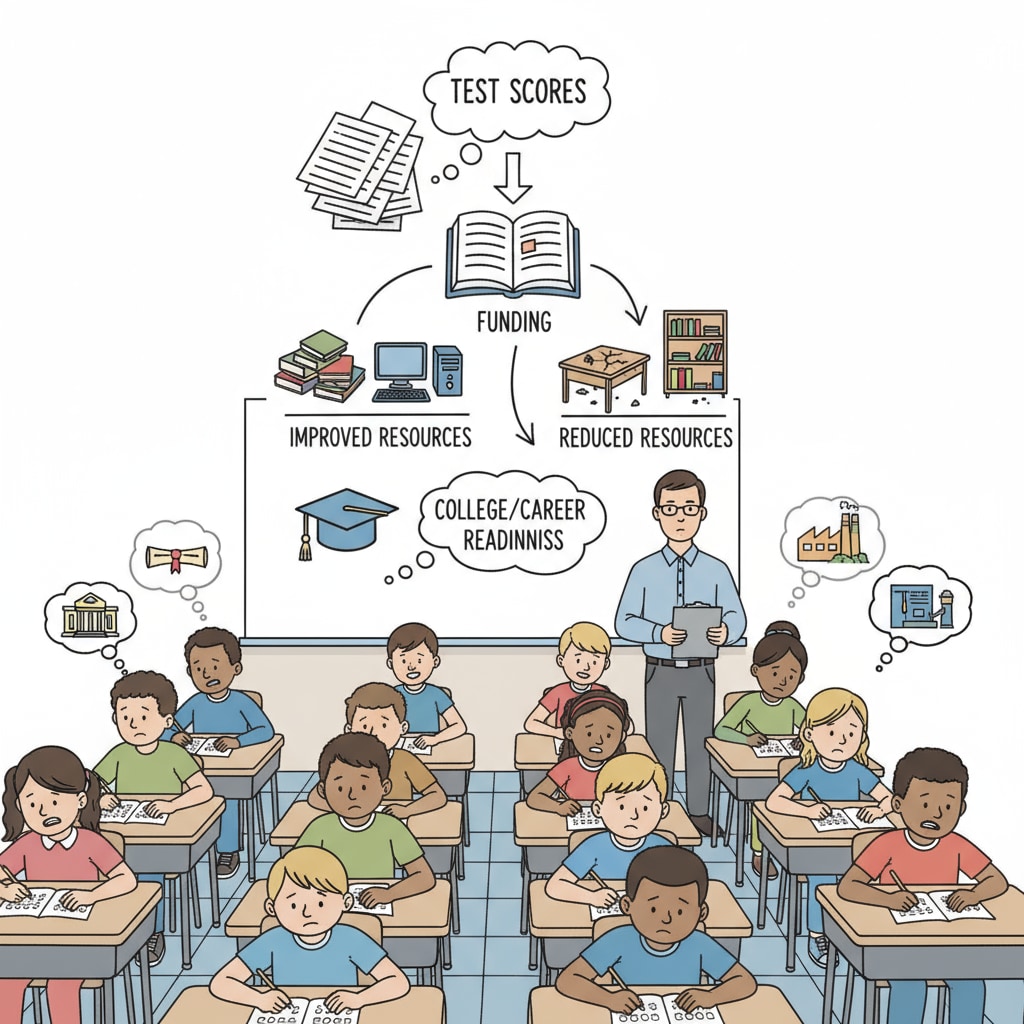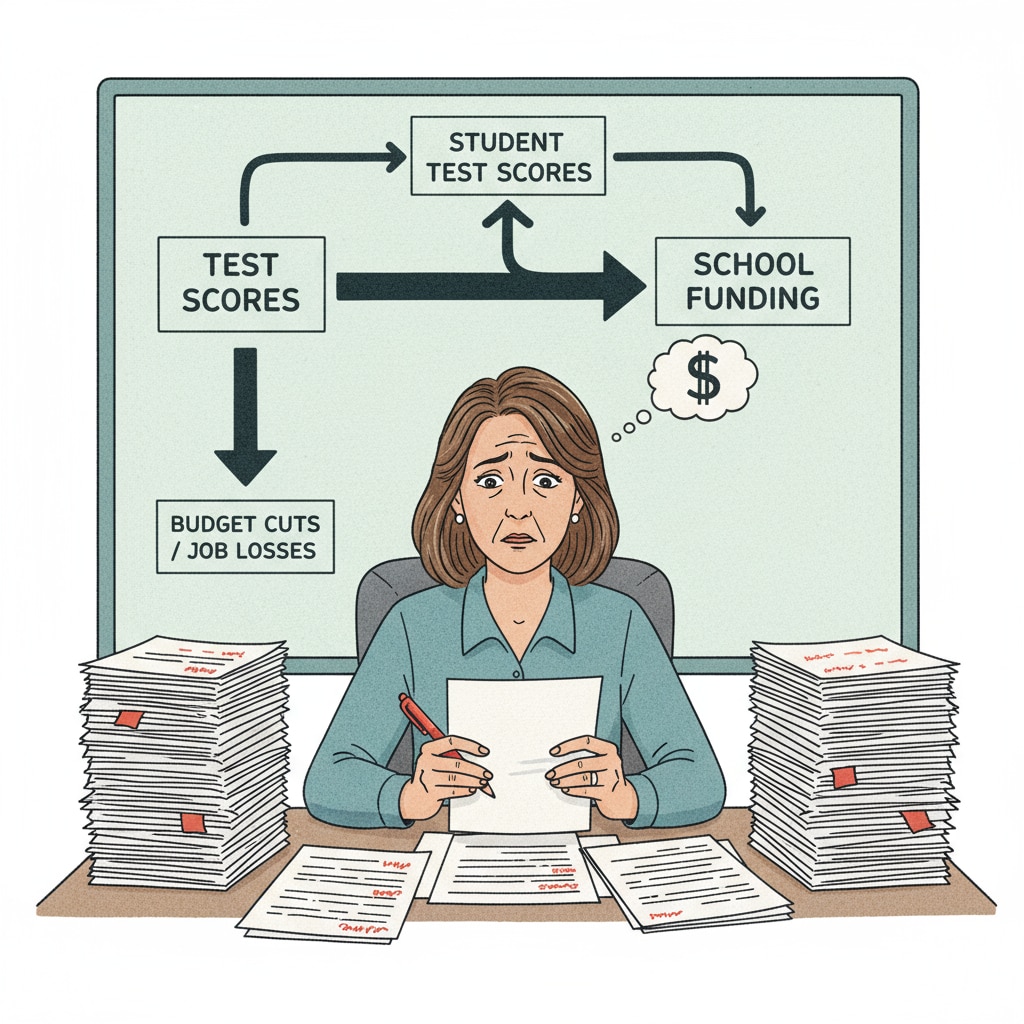Education funds, test scores, and public schools are intertwined in a complex relationship that has long been a subject of debate in the United States. The “No Child Left Behind” policy, which aimed to improve educational quality across the nation, brought this relationship into sharp focus. But did the increased funding tied to test scores and attendance really lead to better education in public schools?

The “No Child Left Behind” Policy and Its Funding Mechanism
The “No Child Left Behind” policy was introduced with noble intentions. It sought to ensure that every child, regardless of their background, received a quality education. To achieve this, the federal government established a funding system that was closely linked to test scores and school attendance. Schools that showed improvement in these areas were rewarded with more funds, while those that lagged behind faced consequences.
No Child Left Behind Act on Wikipedia
The Doubt over the Effectiveness of the Funding Model
However, many educators and researchers began to question whether this funding model was truly effective in enhancing educational quality. While it did put pressure on schools to improve test scores, it also led to a narrow focus on test preparation. Teachers often found themselves spending a significant amount of time teaching to the test, rather than focusing on a well-rounded education. For example, subjects like art, music, and physical education were sometimes sacrificed to make more room for test preparation.

In addition, the emphasis on attendance as a factor for funding might not accurately reflect the quality of education. A school could have high attendance rates but still provide a subpar education. This raises the question of whether the federal funding mechanism was actually measuring what mattered most – the quality of learning and the development of students’ skills and knowledge.
Education Policy on Britannica
The Struggle of Public Schools to Find Balance
Public schools were caught in a difficult situation. On one hand, they needed the federal funds to support their operations, pay teachers, and provide resources for students. On the other hand, they also wanted to uphold their educational ideals and provide a rich and diverse learning environment. They had to find ways to meet the requirements of the funding system while still ensuring that students were receiving a well-rounded education.
Some schools tried innovative approaches. They incorporated test preparation into their regular curriculum in a more integrated way, rather than having it as a separate, intensive activity. They also worked on improving student engagement and motivation, believing that this would lead to better attendance and, ultimately, better test scores. However, these efforts often faced challenges due to limited resources and the complexity of the education system.
Readability guidance: The relationship between education funds, test scores, and public schools is complex. The “No Child Left Behind” policy’s funding mechanism had good intentions but faced doubts. Public schools are constantly striving to balance financial needs and educational quality. By understanding these aspects, we can work towards a more effective education system.


